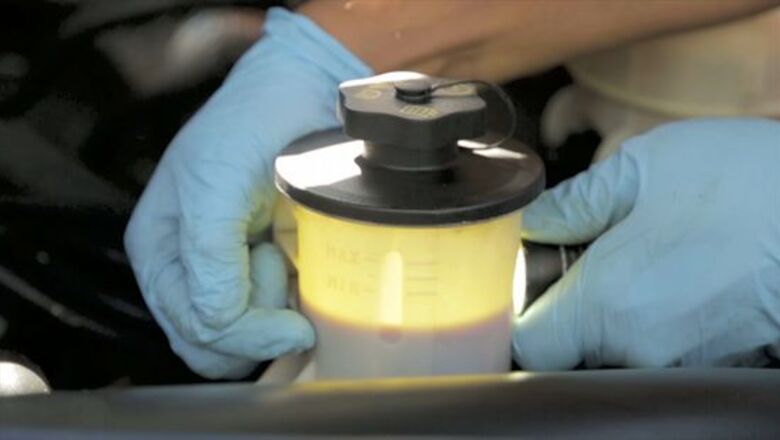
views
Look for the reservoir cylinder. If you're having difficulty turning the steering wheel or a high-pitched whining noise issues from the steering wheel when you turn it, chances are your power-steering fluid is low. The power-steering fluid can be found in a cylindrical reservoir near the power steering pump or remotely located with hoses from the pump, and should be clearly labeled. The cylinder may be made of either plastic or metal. If you can't find the cylinder, consult your owner's manual for the location. While the power-steering reservoir is usually located in the same space in most cars, newer vehicles may place them elsewhere for economy or space. If the steering wheel is locked, you can check the key. It may wear out. Check the tumbler, it wears out with regular usage. Also check that the neutral safety switch or the shift linkage is in the proper position.
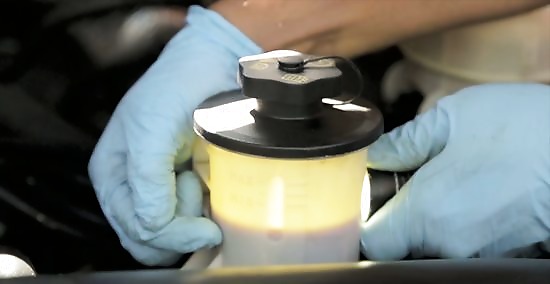
Check the level of the power-steering fluid. If the reservoir cylinder is made of translucent plastic, you may be able to see the fluid level inside the cylinder. If the reservoir cylinder is made of metal, or if the plastic is not sufficiently transparent, you'll check the fluid level with a dipstick, which is usually attached to the cap. On some cars, the power-steering fluid level can only be checked accurately after the engine has run for a brief period, and sometimes you must also turn the steering wheel in either direction several times while the car idles. On other cars, there are gradations on the dipstick or cylinder for both a "hot" level, after the engine has been running, and a "cold" level, after the engine has been off for a period of time. On still other cars, there may be "Min" and "Max" lines for acceptable fluid levels. Be sure to compare the power-steering fluid level against the correct mark.
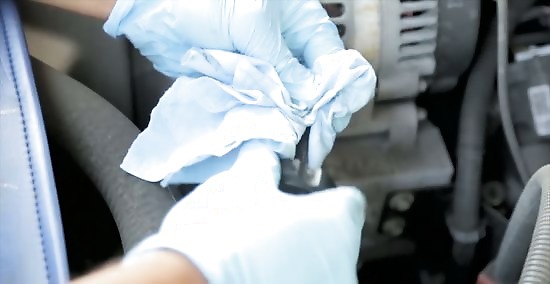
Examine how much of the dipstick is covered by power-steering fluid. If you are using a dipstick to test the power-steering fluid level, first wipe off any excess fluid from the dipstick when you first take it out of the cylinder, then reinsert it as far down as it will go and pull it out again.
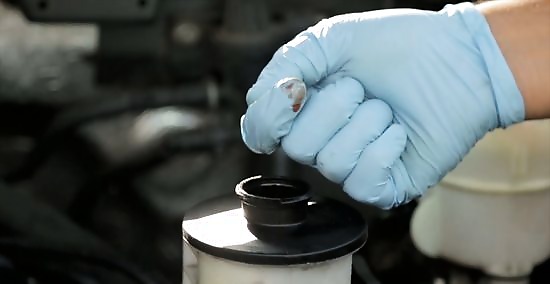
Examine the color of the power-steering fluid. Good power-steering fluid should be clear, amber or pinkish in color. If the power-steering fluid is brown or black, it has been contaminated with bits of rubber from connecting hoses, seals or O-rings. In this case, the car should be taken to a mechanic to see if any of the power-steering system parts need to be replaced, along with the fluid. The power-steering fluid may look darker than it actually is. If you have any doubts, look at the color of the power-steering fluid stain on the rag or paper towel you wiped your dipstick off with. If the stain is the color the fluid is supposed to be, your fluid is not contaminated.
Add power-steering fluid as needed to the correct fill level. If your car has gradations on the cylinder, you can add the fluid steadily until you reach the correct "hot" or "cold" fill level; if you checked the level with a dipstick, add the fluid incrementally to avoid overfilling the reservoir. Be sure to use only the power-steering fluid that is recommended for your car, as it will be the correct viscosity (thickness) for your car's power-steering system. The manufacture does not recommend using transmission fluid in place of power steering fluid. There are too many different types of fluid, and if the wrong fluid is used, it may cause failure of power steering and its seals. Be careful not to overfill your power-steering unit with fluid. It's probably better to under fill your unit than overfill it. That's because power-steering fluid expands as it heats up and works its magic. If you fill your unit all the way to the top and then try to drive your car, the expanded pressure could begin to cause problems and might necessitate expensive repairs. EXPERT TIP Hovig Manouchekian Hovig Manouchekian Auto Repair & Design Specialist Hovig Manouchekian is an Auto Repair and Design Specialist and the Manager of Funk Brothers Auto, a family-owned business operated since 1925. With over 30 years of experience in the automotive industry, Hovig specializes in the process of auto repair and maintenance. He is also very knowledgeable in common automotive issues and needs including engine repair, battery replacement, and windshield accessory and maintenance. Hovig's knowledge and hard work have contributed to Funk Brothers Auto winning Angie's List Super Service Award for five consecutive years. Hovig Manouchekian Hovig Manouchekian Auto Repair & Design Specialist Top up your power steering fluid to ensure a smooth ride. Contaminated power steering fluid is a common cause of a stiff steering wheel, as are low levels of fluid. Fix contaminated fluid with a system flush. If the fluid level is low, there may be a leak in the system. Keep the reservoir filled with fresh fluid.
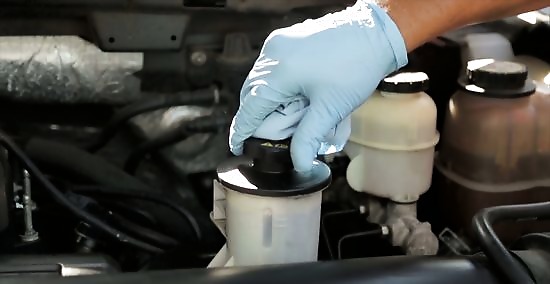
Replace the cylinder cap. Depending on the make of car, you may have to push or screw the cap into place. Be sure it's firmly attached before you close the hood.




















Comments
0 comment